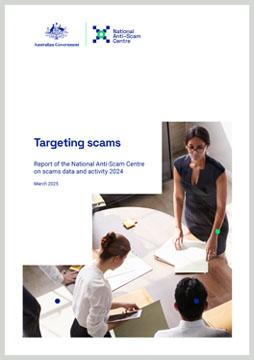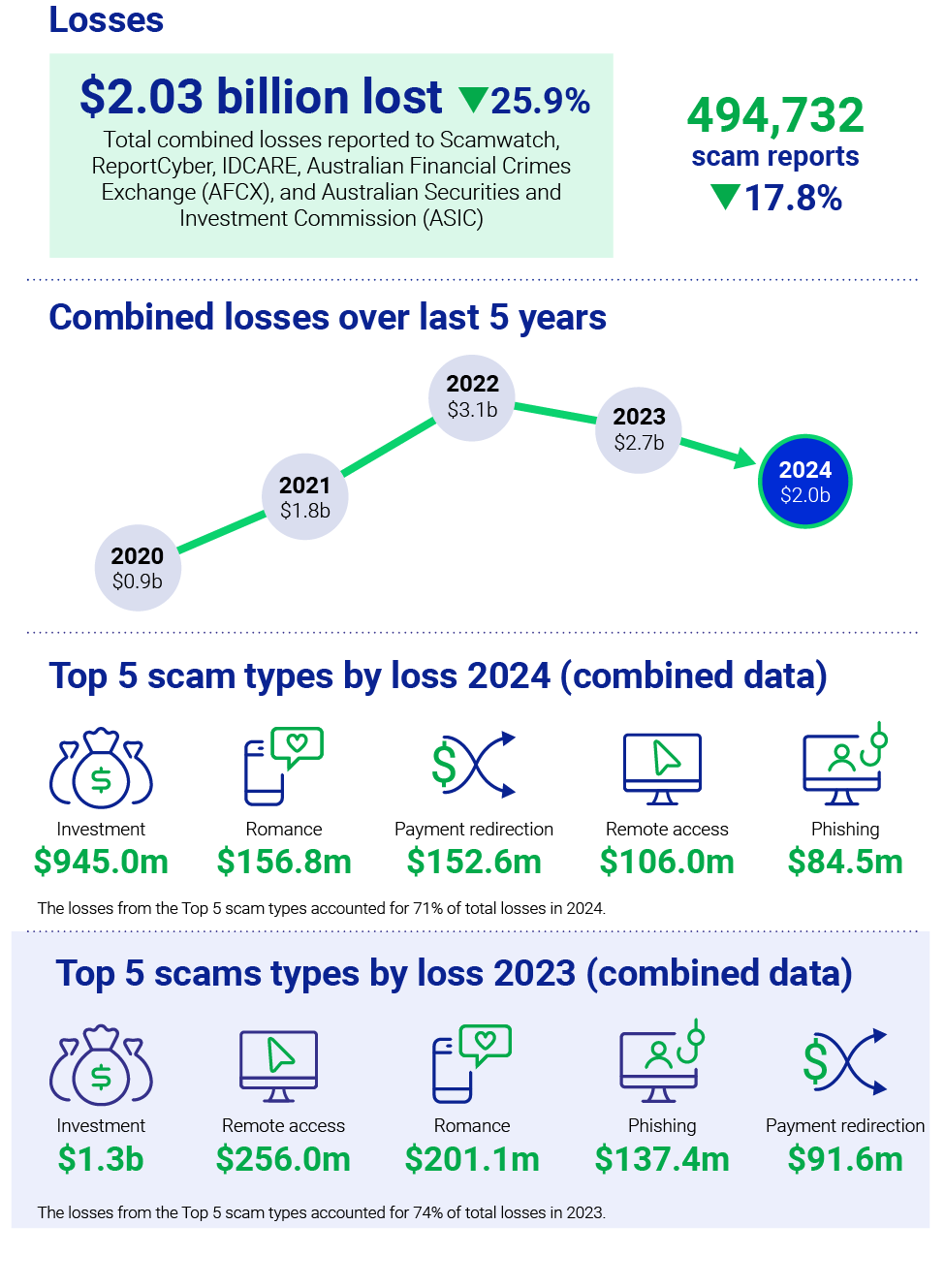The Targeting scams report highlights the cooperative work of the ACCC, other regulators and law enforcement agencies to disrupt scams and educate consumers.
On this page
Latest report

This report provides insight into scams reported by Australians in 2024 and highlights the impact of combined efforts by government, law enforcement, community sector and industry to combat these financial crimes.
Infographic

Infographic text
Losses
Total combined losses reported to Scamwatch, ReportCyber, IDCARE, Australian Financial Crimes Exchange (AFCX) and Australian Securities and Investment Commission (ASIC): $2.03 billion (a decrease of 25.9%)
494,732 scam reports (a decrease of 17.8%)
Combined losses over last 5 years
2020: $0.9 billion
2021: $1.8 billion
2022: $3.1 billion
2023: $2.7 billion
2024: $2.0 billion
Top 5 scams by loss 2024 (combined data)
- Investment: $945 million
- Romance: $156.8 million
- Payment redirection: $152.6 million
- Remote access: $106 million
- Phishing: $84.5 million
The losses from the top 5 scam types accounted for 71% of total losses in 2024.
Top 5 scams by loss 2023 (combined data)
- Investment: $1.3 billion
- Remote access: $256 million
- Romance: $201.1 million
- Phishing: $137.4 million
- Payment redirection: $91.6 million
The losses from the top 5 scam types accounted for 74% of total losses in 2023.



